Helping to keep your best friend bouncy...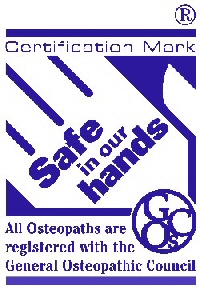
Osteopathy is a science in which the
practitioner interprets a wide range of diagnostic clues in the search for the underlying cause
of a problem. Claire Short could wax lyrical about neuro-muscular this or myo-fascial that, but
she's been told by her partner to stick to plain English, so thatís what she's done! Pay
attention.
Essentially, if an animalís structure
(that is, its skeleton and all the attached muscles, ligaments and tendons etc) is not working
properly, it is likely to prevent the animal performing its normal function. The principle
applies equally to humans and dogs. It can also work in reverse Ė keep doing the same unusual
activity and the structure may adapt to suit. And that can cause pain.
Osteopathy and dogs
So how is all this related to dogs? Like you,
your dog can trip, fall, and sleep in strange positions, all of which may cause problems. Or
your dog may require post operative treatment to help him or her recover from surgery. Agility
dogs are particularly susceptible to work related injuries or muscular imbalances due to
training. We all understand how repetitive strain from activities such as typing can cause
problems in humans Ė training often imposes similar repetitive patterns in your dog. Also,
remember that an increase in work or change in routine can provoke injury.
The Dog as an
athlete
An agility dog develops through physical training
in exactly the same way a human athlete does, yet, sadly, we donít often see ringside physical
therapists waiting to treat the injuries.
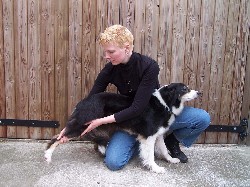 As
we work our dogs, their muscles build up to help them fly over the hurdles and crouch low
through the tunnels. As these muscles work harder they can get shorter, which may prevent your
dog weaving through the poles so well. The muscles can also develop at different rates so one
side may be more toned than the other. This may result in your dog having the most amazing
height over hurdles, but always landing slightly to one side so losing valuable seconds in the
race against the clock. As
we work our dogs, their muscles build up to help them fly over the hurdles and crouch low
through the tunnels. As these muscles work harder they can get shorter, which may prevent your
dog weaving through the poles so well. The muscles can also develop at different rates so one
side may be more toned than the other. This may result in your dog having the most amazing
height over hurdles, but always landing slightly to one side so losing valuable seconds in the
race against the clock.
Iím not for a moment suggesting that we
should give up all training and leave our dogs to lounge about in front of the telly, but it is
important to recognise the strains and pressures we put on their bodies, and to be aware that
there are ways of making the dog more comfortable and reducing the chances of future injury. At
the same time, this is likely to improve performance.
Osteopathy - What to
expect
At the first appointment the osteopath will need
to know as much as possible about your dog: his knocks, falls, strange behaviour, exercise
routine, feeding, surgery, and general health.
After taking the history, the osteopath
will look at how your dog moves. He or she will check the joints and muscles for any tightness,
and will examine the whole dog, since the cause of the problem is not always where you think it
might be. Donít be surprised if your osteopath examines your dogís head when you were convinced
there was a problem with the back legs!
 Treatment Treatment
Your osteopath will need to contact your vet to
obtain permission to treat your dog. This is a legal requirement and this also provides the
opportunity to ensure the osteopath knows the animalís complete medical history. Most vets are
well aware of the benefits of osteopathy, and will ask the osteopath to let them know what they
find during treatment.
Osteopathy is not just about clicking
backs. You may see your osteopath using stretches, gentle joint mobilisation and massage-like
techniques to remove any imbalances in mobility. Manipulation (clicking), is used when
necessary, and despite the noise is painless. Another, very gentle, technique is cranial
osteopathy. This is a subtle method of treating and may send both you and your dog to sleep!
Donít be fooled, though, it is a powerful way to rebalance ligaments, and strains throughout
the body. You may also be advised on exercises or stretches to incorporate into your training
time. This is particularly important for agility dogs as some of their muscles are prone
to getting very tight.
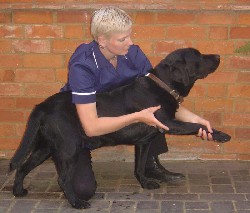 How
do I know if my dog needs treatment? How
do I know if my dog needs treatment?
It is a good indication that dogs are in
discomfort if they seem unusually sensitive when you touch particular areas. Other indications
that treatment may be beneficial include:-
- Unusual
behaviour patterns
-
Unexplained lameness
- Reluctance
to reach over jumps
- Reduced
performance
- Problems
after surgery
- Injuries
caused by misjudging an obstacle, knocking poles, or landing awkwardly
How often will my
dog need treatment?
How often your dog needs treatment depends very
much on how often you are competing together, how you train, and what injuries your dog
sustains. Olympic athletes (human and animal) have access to physical therapy on a regular
basis because they are pushing their bodies to extreme levels of fitness. The rest of us
(including our dogs) would probably benefit from a regular MOT every four to six months, just
to keep everything in good working order, and more intense treatment only after specific
injuries.
Happy jumping
The most wonderful part about having your dog treated is seeing him or her jumping
for joy with no pain and no uneven movements. As they say on Agilitynet, hereís to happy
jumping!
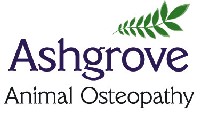 If
you would like more information about animal osteopathy please do contact Claire at:= If
you would like more information about animal osteopathy please do contact Claire at:=
The Ashgrove Clinic, 13 Lancaster
Street, Higham Ferrers, Northamptonshire NN10 8HY
Tel: 01933-469 043
Email: info@ashgrovehealth.co.uk
www.ashgrovehealth.co.uk
If you are not in the Midlands, North
London or South East of England and would like to find out more about osteopathy for either
your dog or yourself, please see below.
-
 To
find a human osteopath in your area contact the General Osteopathic Council:
www.osteopathy.org.uk To
find a human osteopath in your area contact the General Osteopathic Council:
www.osteopathy.org.uk
-
To find a dog osteopath in your area
please contact Stuart McGregor at the Osteopathic Centre for Animals on 01235 768033.
He will be able to put you in touch an osteopath specifically trained to treat animals.
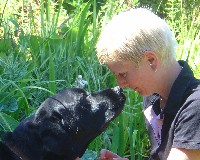 About
the author... About
the author...
Claire Short has been surrounded by
animals since she was a child. After completing the five year training to become an
osteopath she trained to treat animals too, and now works in the South East, North London, and
Midlands treating dogs, horses, cats and (surprisingly) a number of sheep.
Currently her lumbering Labradorís lack
of interest in agility prevents her competing, but the two of them persevere none the less!
|